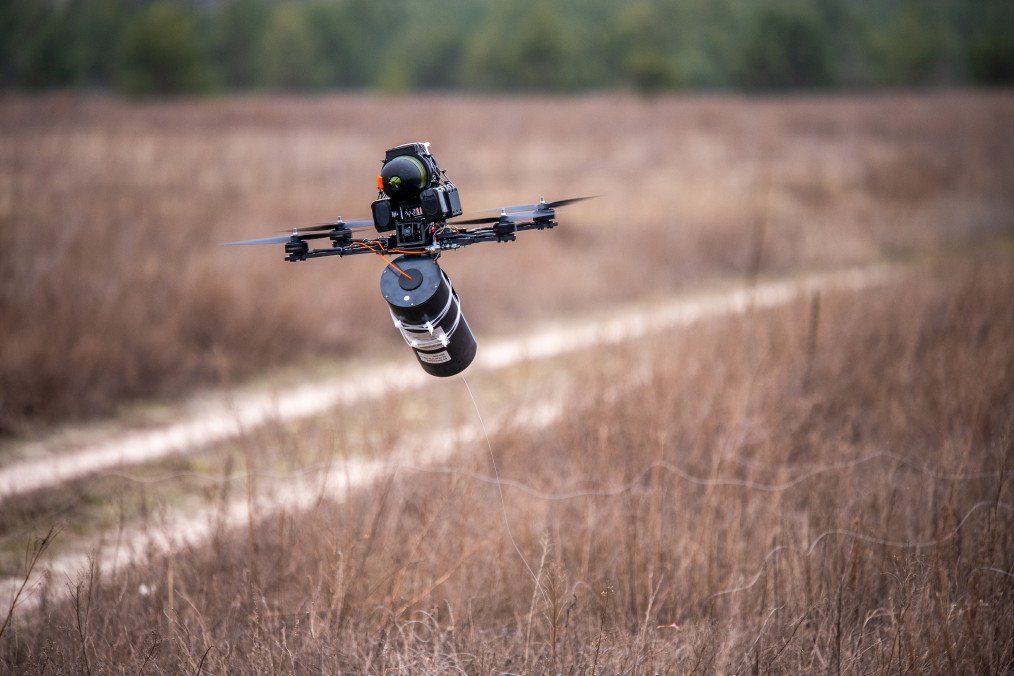- Category
- Latest news
Ukraine Focuses on Fiber-Optic Drones for Long-Range Strikes, Closing Tech Gap With Russia

As part of its ongoing efforts to strengthen its military capabilities, Ukraine is focusing on the development of fiber-optic-controlled drones with extended ranges, aiming to close the technological gap with Russian forces.
To achieve this, Ukrainian defense officials believe it is essential to enhance the range of these drones, ideally extending their capabilities to 20 kilometers (12 miles), or more according to Yevheniy Khmara, head of the Special Operations Center “A” of the SBU on April 29.
Khmara emphasized the importance of developing these drones to gain a tactical advantage in the war. The Ukrainian Defense Forces require advanced operational and tactical tools capable of delivering precise, powerful strikes on Russian positions, especially in well-fortified areas.
Such capabilities would enable Ukrainian forces to engage adversaries effectively, even in the most challenging combat scenarios.
Moreover, Khmara highlighted the necessity of developing alternative navigation systems for long-range suicide drones, which would be crucial for expanding Ukraine’s drone capabilities.
On April 1, over 15 Ukrainian UAV manufacturers had tested their drones by flying them over a 20-kilometer obstacle course that simulated a real-world mission scenario.
This testing revealed notable advancements in drone technology. While earlier versions of such drones had a range of only 5 to 10 kilometers, the newly tested models now have the capacity to strike targets from distances exceeding 20 kilometers.
This extended range opens new possibilities for Ukraine to carry out long-range strikes, which were previously limited to radio-controlled FPV drones.
A key feature of fiber-optic drones is their immunity to radio-electronic interference, a vulnerability often exploited by the Russian forces. Fiber-optic communication allows drones to remain undetectable by radio reconnaissance systems, offering a crucial advantage in a war where stealth and precision are paramount.
-919b6c9719e6fb60c6da2cbe4010170b.png)
Furthermore, operators can receive high-quality, real-time images without being affected by radio horizon limitations, ensuring more effective targeting during operations.
Testing on April 1 also included trials of seven ground robotic systems (GRS) using fiber-optic control, further expanding the range of capabilities for the Ukrainian military.
A significant development in the production of fiber-optic drones is the drop in cost associated with their manufacture.
The price reduction is attributed to increased production and competition among suppliers, which has made fiber-optic technology more accessible to Ukrainian drone manufacturers.
In Ukraine, factories are already operational, capable of winding finished optical fiber onto reels. This is a critical step for ensuring the reliability of the drones and reducing the risk of cable breakage during flight.
Ukrainian forces are already utilizing these advanced fiber-optic drones in combat, and their effectiveness on the frontlines continues to grow.
In related news, the Ukrainian Shark reconnaissance drone, actively deployed on the front lines, has attracted the attention of the Czech Armed Forces. On April 29, the Czech military posted photos on its official Facebook page showcasing a range of drones, including the fixed-wing Shark UAV, undergoing field testing.

-554f0711f15a880af68b2550a739eee4.jpg)


-72b63a4e0c8c475ad81fe3eed3f63729.jpeg)





-111f0e5095e02c02446ffed57bfb0ab1.jpeg)